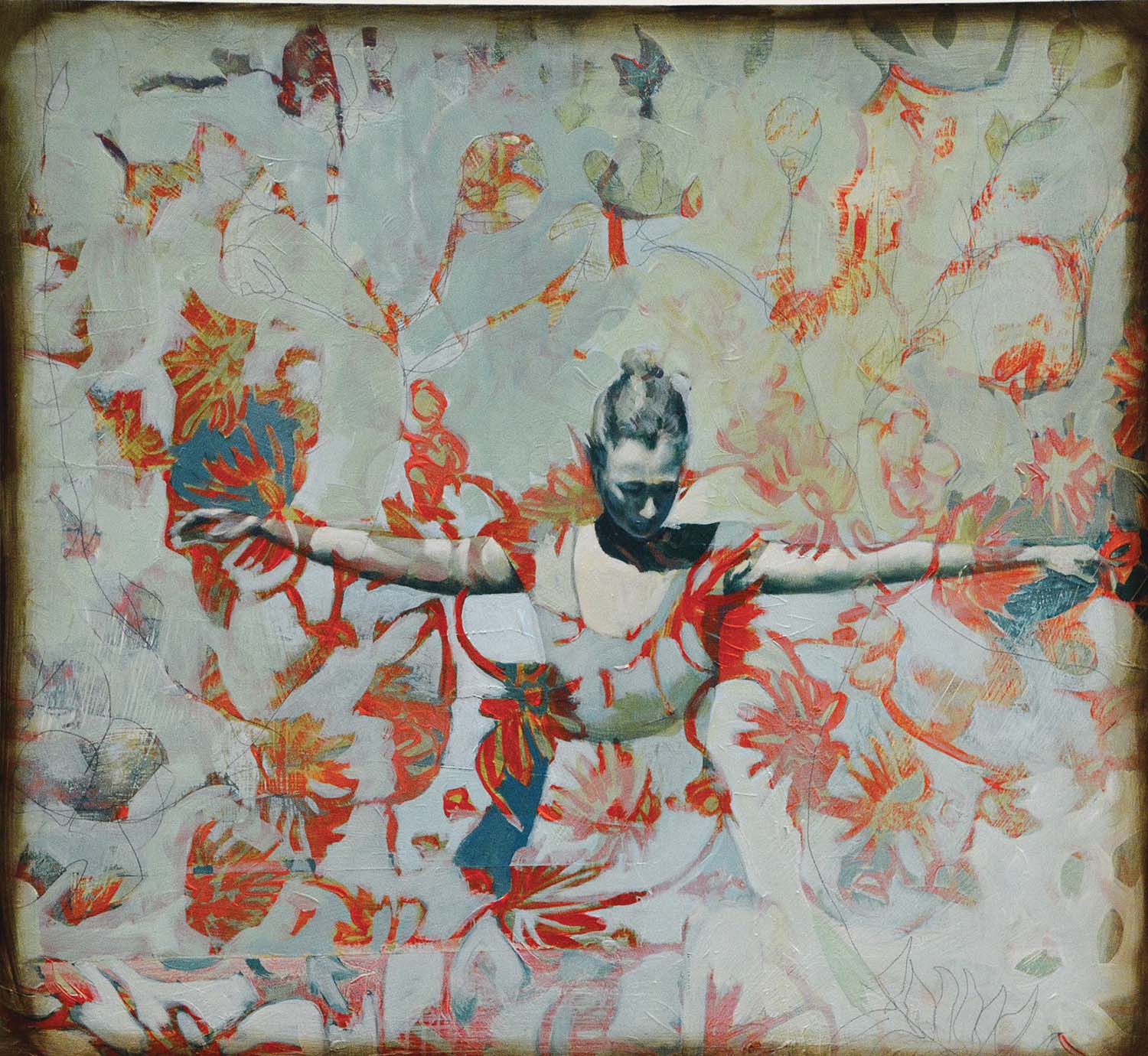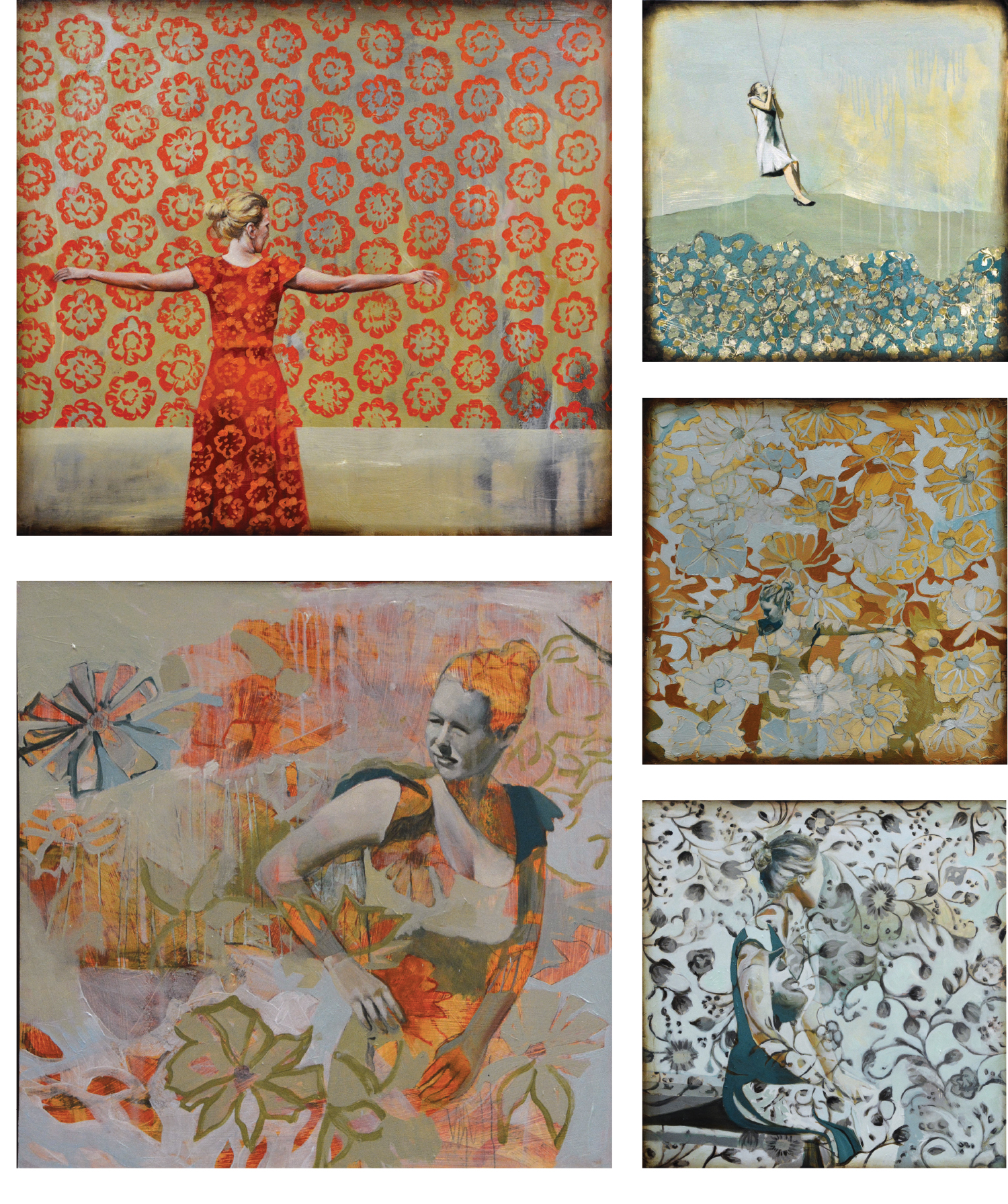
Portrait by Morgan Ford
Oil painter Alicia Anne Armstrong often labors over a painting for hours or days. Then, as soon as the paint is dry, she does what most artists might consider unthinkable. She deliberately smudges, scrapes, scratches, obscures, or destroys significant sections of what she just worked so hard to create.
She uses aggressive tools like sandpaper to disrupt the sense of established order. “Uncertainty makes people crazy,” Armstrong acknowledges. “But that’s how and when I make my best work … when I embrace the uncertainty.” Then she’ll paint another layer, sand again, and may repeat the process several times before a piece is finished. She’s energized by that unconventional approach, and the kind of raw but delicate beauty it brings to light.

“The things that excite me the most are texture and color,” explains Armstrong. “The visual surface texture says a lot about the depth and history of the piece and where it came from, and it’s also completely uncertain and unpredictable. I don’t want to paint things perfectly. I like mild confusion mixed with joy … because sometimes they go hand in hand. I like vulnerability.”
Armstrong also likes to paint an entire body of work — 10 to 20 canvases simultaneously — around a particular theme or artistic concept. “That way I’m not hyper-focused on the success or failure of just one piece,” she says, “and I can work through ideas quicker.”
Before progressing into a new body of work, she’ll jot down characteristics of a person, experience, or surface. As those start to appear on the canvas and resonate with her, she lets intuition be her guide.

“I start pulling paintings aside that represent what I feel and am trying to say. Others are outliers. They are the runts. That doesn’t mean they are less special, but they might not thrive or be indicative of the entire body of work I’m trying to create.”
Her previous series, she says, “captured a quiet moment in time.” Now, though, “the figures are moving through time … engaging with and turning toward this kind of disintegrating wallpaper.”
If there’s such a thing as a quintessentially Asheville painter, it’s Armstrong. She graduated from UNCA in 2000, winning the Fine Arts Department’s academic leadership award, and today her work hangs in the college’s Lipinsky Auditorium, as well as in numerous private collections and in galleries up the coast, from Florida to Charleston to Boston. Her advice addresses the big picture, but it’s sanded by a no-nonsense attitude.
The main thing, she says, is to continue working through the transitions, even in the absence of inspiration. “If you’re a creator, there’s a bouquet of ideas. And then nothing — it’s feast or famine. That’s the natural ebb and flow. So showing up to work every day is key. For me, there’s none of this waiting around until you’re inspired. I don’t take breaks.”
Alicia Anne Armstrong, West Asheville, 2002 Riverside Drive, studio 42-L. She’s represented locally by Haen Gallery in Asheville and Brevard (thehaengallery.com) and can also be contacted via her website — aliciaannearmstrong.com, or @AVLAlicia on Instagram.